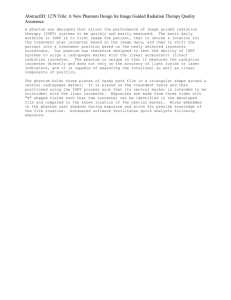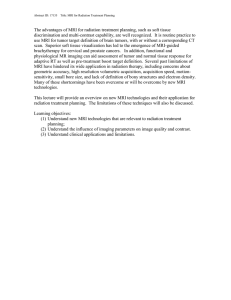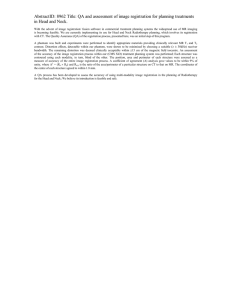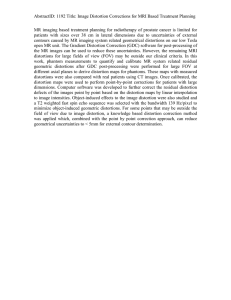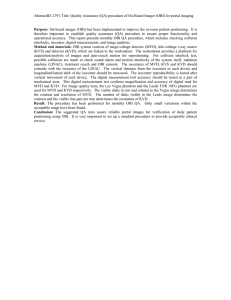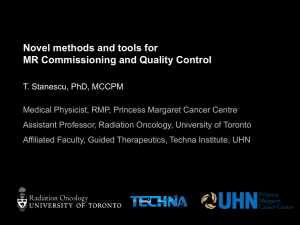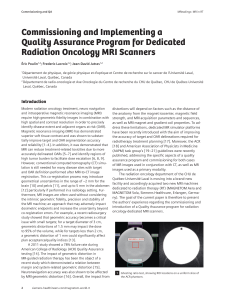AbstractID: 7398 Title: Characteristics and quality assurance of a dedicated... MRI for radiation therapy simulation
advertisement
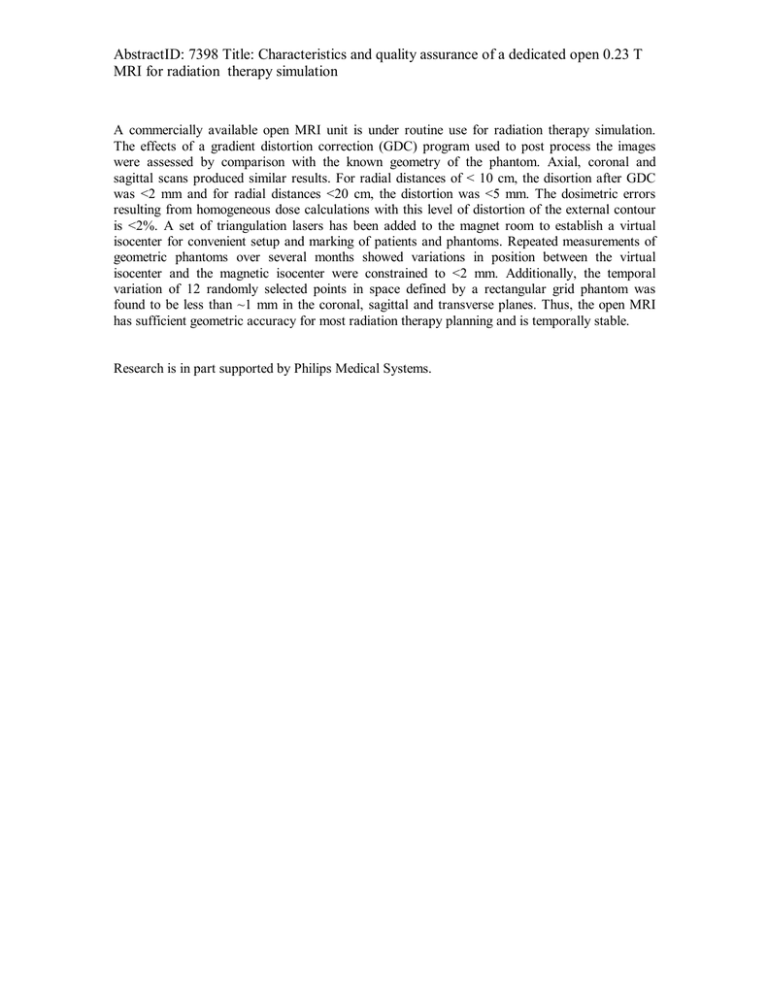
AbstractID: 7398 Title: Characteristics and quality assurance of a dedicated open 0.23 T MRI for radiation therapy simulation A commercially available open MRI unit is under routine use for radiation therapy simulation. The effects of a gradient distortion correction (GDC) program used to post process the images were assessed by comparison with the known geometry of the phantom. Axial, coronal and sagittal scans produced similar results. For radial distances of < 10 cm, the disortion after GDC was <2 mm and for radial distances <20 cm, the distortion was <5 mm. The dosimetric errors resulting from homogeneous dose calculations with this level of distortion of the external contour is <2%. A set of triangulation lasers has been added to the magnet room to establish a virtual isocenter for convenient setup and marking of patients and phantoms. Repeated measurements of geometric phantoms over several months showed variations in position between the virtual isocenter and the magnetic isocenter were constrained to <2 mm. Additionally, the temporal variation of 12 randomly selected points in space defined by a rectangular grid phantom was found to be less than ~1 mm in the coronal, sagittal and transverse planes. Thus, the open MRI has sufficient geometric accuracy for most radiation therapy planning and is temporally stable. Research is in part supported by Philips Medical Systems.
